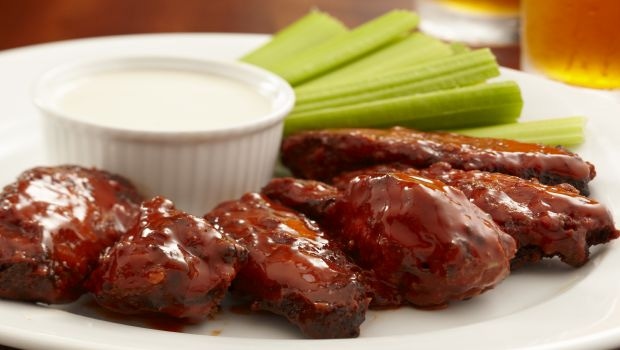Hot Sauce Spicing Up Retail, Foodservice Sales
Right now, hot sauce reigns supreme. According to the NPD Group, 56 percent of households have hot sauce on hand in their kitchens, and Sriracha, an Asian hot sauce, is stocked in 9 percent of total U.S. households. What’s more, the popularity of hot sauce also extends to away-from-home dining experiences.
March 17, 2015

The popularity of ethnic foods among U.S. consumers has been on the upswing, and now, more than ever, Americans are exploring these spicier and bolder flavors and more culturally diverse foods.
Just last Fall, Food Product Design predicted that hot and spicy will remain on the menu for 2015 thanks to the demand for deeper explorations of global cuisines and cooking methods, especially Asian, and new foods and flavors that meet demands for balanced nutrition as well as adventurous eating experiences.
And it seems like we were right. Technomic data found 37 percent of consumers are increasingly driven to try more exciting and innovative flavors. What’s more, there is an increased demand for spicy flavors—54 percent of consumers prefer hot or spicy sauces, dips or condiments compared to 48 percent in 2011. Take for example, Heinz recent roll out of its new Heinz Ketchup Blended with Sriracha Flavor that combines the classic taste of its ketchup with the added kick from spicy chile pepper and garlic flavors.
Right now, hot sauce reigns supreme. According to the NPD Group, 56 percent of households have hot sauce on hand in their kitchens, and Sriracha, an Asian hot sauce, is stocked in 9 percent of total U.S. households and 16 percent of households headed by someone under age 35.
What’s more, the popularity of hot sauce also extends to away-from-home dining experiences. Cases of hot sauce shipped from foodservice distributors to restaurants and other foodservice outlets increased by double-digits over the past two years, according to stats from NPD’s SupplyTrack®.
Classic Louisiana-style hot sauce is still the leader in terms of case volume shipped from distributors to U.S. foodservice outlets, but shipment growth has tapered off because of the wide variety of hot sauces now available. Case shipments of some habanero hot sauce flavors, particularly habanero with fruit flavors like mango, grew triple-digits in the year ending December 2014 compared to the same period 2013. There were double the cases shipped of Chipotle hot sauce flavors and Sriracha in 2014 than in the previous year, according to NPD’s SupplyTrack, a monthly tracking service that tracks every product shipped from major broadline distributors to their foodservice operators.
So who’s craving the hot stuff? Females ages 18-44 years and 55-64, and males ages 18-54 and 65-plus eat more than the average amount of hot sauce over the course of a year, according to NPD’s National Eating Trends®. Females, ages 45-54 and 65-plus eat less than the average amount. Males, ages 55-64, eat an average amount. Dual-income, no kids households, commonly referred to as DINKS, eat more hot sauce than any household lifecycle. Consumers in the South eat more hot sauce than any other region of the country, but those in Central and Western U.S. also eat an above average amount. Eating less than an average amount of hot sauce are those consumers in the East.
Eating hot sauce also causes affects a physical reaction in the body. Capsaicin, a natural chemical that sends a burning sensation from the nerve endings in the mouth to the brain, causes the body to defend itself against the pain sensation by secreting endorphins, natural painkillers that cause a physical rush, which is similar to a runner’s high.
“Hot sauce is clearly part of the diet of many U.S. consumers, and it’s a food that crosses gender, age, ethnicity and income," said Annie Roberts, vice president, NPD SupplyTrack. “Hot or pepper sauce is a large seasoning category, and for foodservice manufacturers and operators it’s about understanding the category’s share, where the category is growing and where it isn’t, and from which other categories it’s stealing share."
Last Fall, FPD traveled to Avery Island, Louisiana, to take an exclusive look at how the McIlhenny Company produces its TABASCO® brand Original Red Sauce. Check out the Image Gallery that provides an insider’s glimpse into the TABASCO sauce production process.
You May Also Like




.png?width=800&auto=webp&quality=80&disable=upscale)